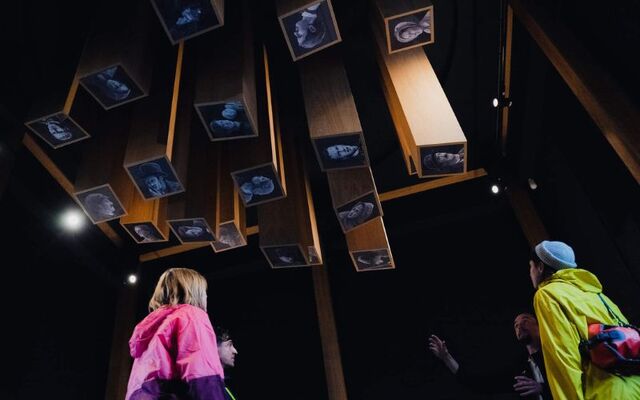The visitor's center, which reopened in 2022, features a world-class multimedia exhibition. The museum tells the story of the Great Famine through the personal tragedies of the tenants on the Strokestown Estate and of their landlords, the once prosperous Pakenham Mahon family.
The museum presents an evocative and authentic retelling of the events at Strokestown that led to the forced emigration of 1,490 people from the estate in 1847, scenes that were also played out across the island.

Strokestown Park House & Gardens, Roscommon.
Artefacts and documents from Strokestown’s extensive archive, which is home to the largest collection of material relating to the Great Famine, are showcased throughout the new museum. They include the Cloonahee Petition, a plea from the tenants for help as they faced another winter of starvation.
Read more
Visitors to the immersive National Famine Museum can also take a guided tour of Strokestown House, a Palladian manor and important heritage site, which retains its original furnishings and features.
It is packed with the personal items of the Pakenham Mahon family and has been carefully preserved to show what life for the landed gentry was really like and explain the eventual decline of the great country houses in Ireland. It also reveals what life was like for the staff who lived ‘below stairs’.

The drawing room, inside the National Famine Museum, Strokestown Park.
After the house tour, visitors can enjoy the historic walled gardens and woodland walk through the estate.
The National Famine Museum is also the starting point for the National Famine Way, a walking and cycling trail following in the footsteps of the 1,490 Strokestown tenants who, after they failed to pay their rent, were marched from Roscommon to Dublin to board the emigrant ships.

The old kitchen, inside the National Famine Museum, Strokestown Park.
Along the way are some 30 bronze sculptures of children’s shoes, a reminder of the young boys and girls who walked the route.
The National Famine Way ends at EPIC The Irish Emigration Museum, a multi-award-winning museum that recounts 1,500 years of Irish history, explaining how, where and why the Irish emigrated and their influence on the world.
For more information visit StrokestownPark.ie.




Comments